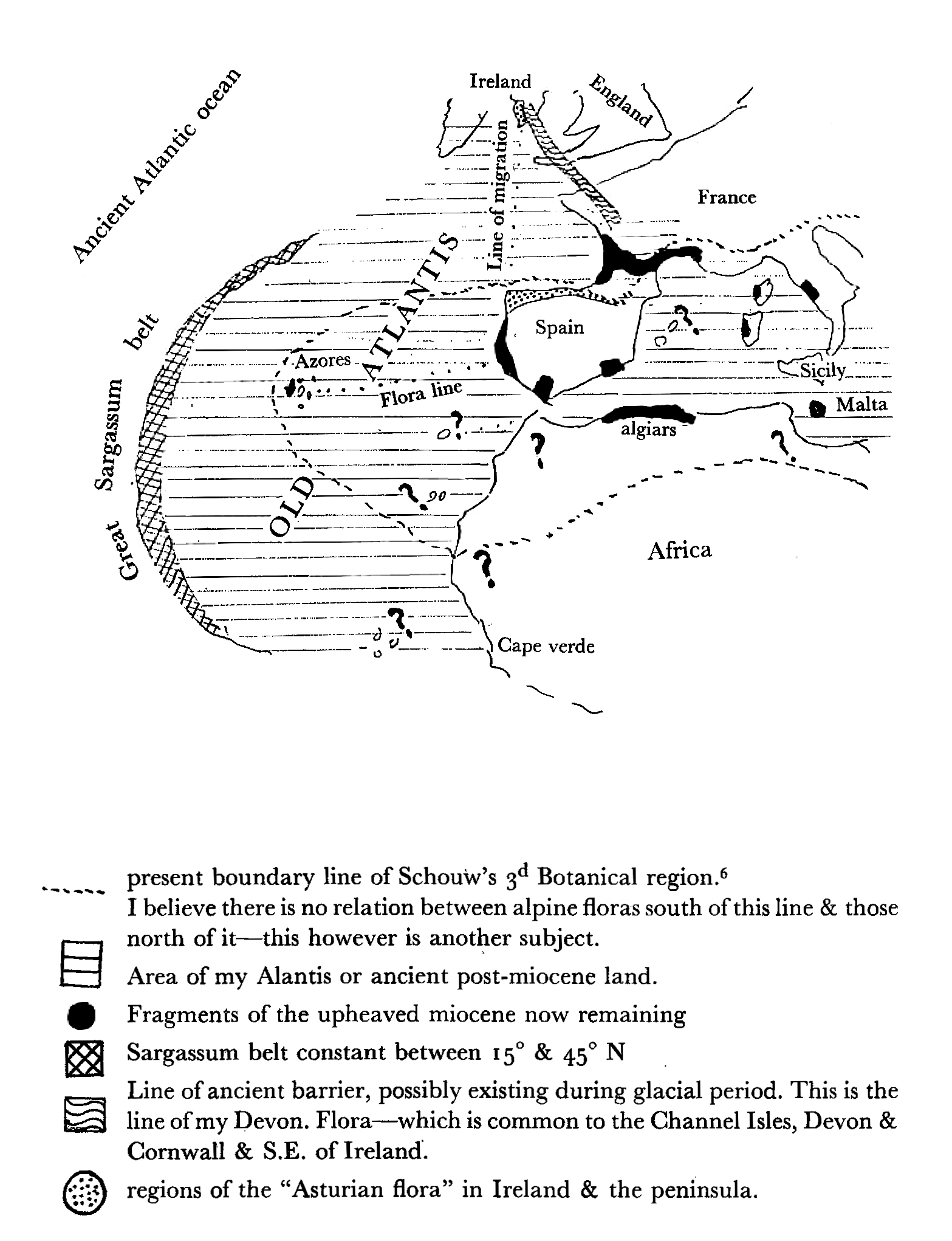Dear Darwin
To answer your very welcome letter so far from being a waste of time is a gain for it obliges me to make myself clear & understood on matters which I have evidently put forward imperfectly & with obscurity. I have devoted the whole of this week to working & writing out the flora question, for I now feel strong enough to give my promised evening lecture on it at the R. Institn. on Friday2 & moreover wish to get it in printable form for the Reports of our Survey. Therefore at no time can I receive or answer objections with more benefit than now. From the hurry & pressure which unfortunately attends all my movements & doings I rarely have time to spare in preparing them for publication to do more than give brief & unsatisfactory abstracts, which I fear are often extremely obscure.
Now for your objections3 —which have sprung out of my own obscurities.
I do not argue in a circle about the Irish case, but treat the botanical evidence of connection & the geological as distinct. The former only I urged at Cambridge,4 the latter I have not yet publickly maintained.
My Cambridge argument was this—that no known currents whether of water or air, or ordinary means of transport would account for the little group of Asturian plants—few as to species but playing a conspicuous part in the vegetation—giving a peculiar botanical character to the South of Ireland. That as I had produced evidence of the other floras of our Islands (i.e. the Germanic—the Cretaceous & the Devonian ((these terms used topographically not geologically) having been acquired by migration over continuous land (the glacial or alpine flora I except for the present—as ice-carriage might have played a great part in its introduction)) I considered it most probable & maintained that the introduction of that Irish flora was also effected by the same means. I held also that the character of this flora was more southern & more ancient than that of any of the others,—& that its fragmentary & limited state was probably due to the plants composing it having (from their comparative hardiness—heaths, Saxifrages &c) survived the destroying influence of the glacial epoch.
My geological argument now is as follows: Half the Mediterranean Islands or more are partly—in some cases (as Malta) wholly—composed of the upheaved bed of the Miocene sea: so is a great part of the south of France from Bourdeaux to Montpellier: so is the west of Portugal, & we find the same corresponding beds with the same fossils (Pecten latissimus &c) in the Azores. So general an upheaval seems to me to indicate the former existence of a great post-Miocene land, the region of what is usually called the Mediterranean flora. (Every where these Miocene islands &c bear a flora of that type) If this land existed it did not extend to America (for the fossils of the Miocene of America are representative & not identical): where then was the edge or coastline of it, Atlantic-wards?
Look at the form & constancy of the great fucus-bank & consider that it is a Sargassum bank & that the Sargassum there is in an abnormal condition & that the species of this genus of fuci are essentially ground-growers.—& then see the probability of this bank having originated on a line of ancient coast. (see diagrams) I cannot admit the Sargassum case to be parallel with that of Confervae 5 or Oscillatoria
Now, having thus argued independantly 1st on my flora & 2d on the geological evidences of land in the quarter required: I put the two together to bear up my Irish case.
I think I have evidence from the fossils of the boulder formations in Ireland that if such Miocene land existed, it must have been broken up or partially broken up at the epoch of the glacial or boulder period.
This diagram may explain my meaning better than a hundred words
 6
—all objections thankfully received:—7 ever most sincerely | Edward Forbes.
6
—all objections thankfully received:—7 ever most sincerely | Edward Forbes.
You’ll be sorry to hear that poor Cumming8 has been suddenly struck with paralysis & is in a very precarious state.
CD annotations
Please cite as “DCP-LETT-956,” in Ɛpsilon: The Charles Darwin Collection accessed on